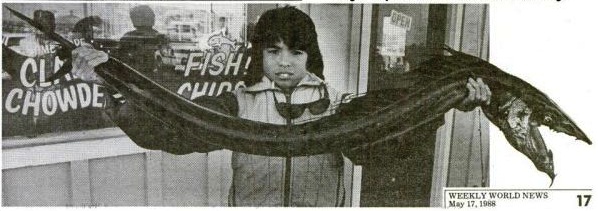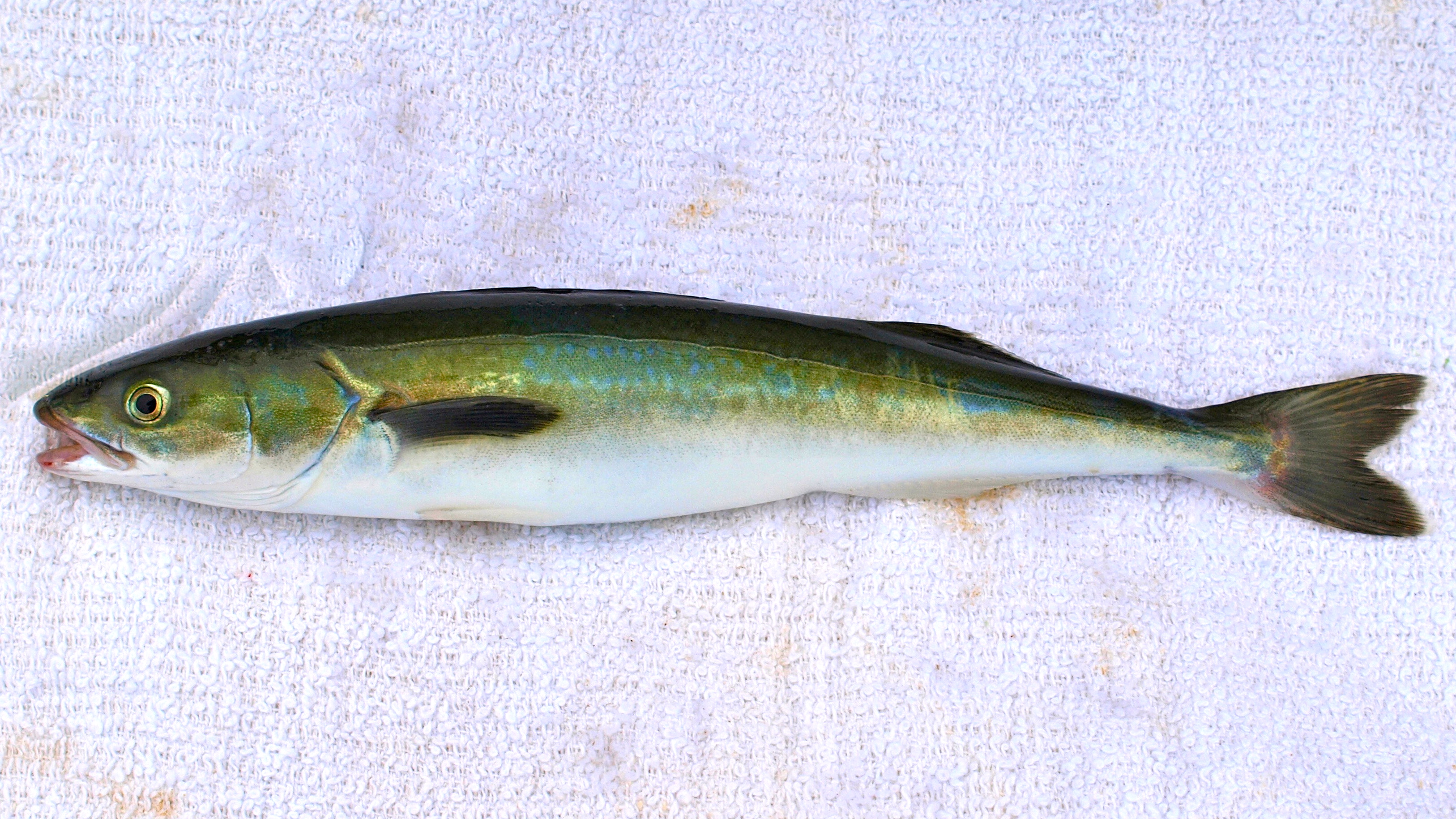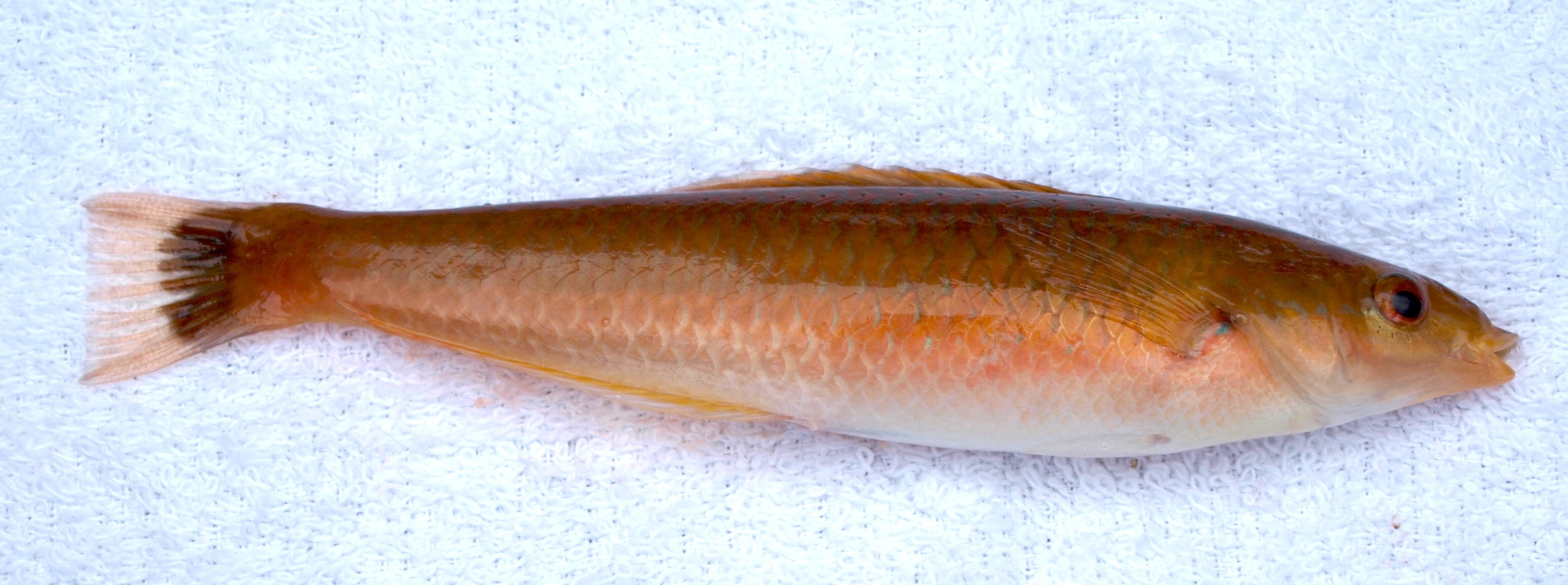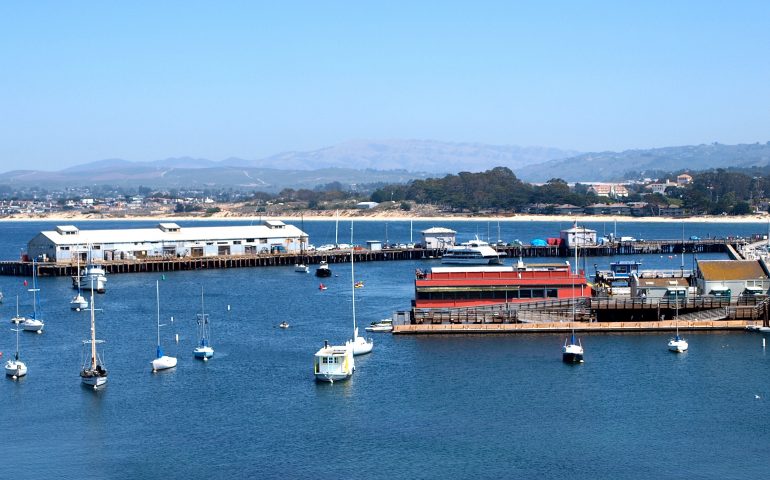—Weekly World News, May 17, 1988

Of interest is that lancetfish are very skinny and though recorded to 6 5/6 feet in length, the listed maximum weight is 19.84 pounds. Thus the scale used to measure the fish was wrong, it was just an estimated weight, or the weight was accurate and the boy caught himself a record fish (although it does not look like a 35-pound fish).
The boy’s catch was at least the third report of the fish along the Monterey Bay shoreline at the time of the catch. A newspaper article from November 2, 1973 (The Daily Review, Hayward, California) reported, “a lancet, the sharp-toothed deep-water fish was found in a surf here recently. Robert Lea, a State Fish and Game Department marine biologist said it was only the second time in 40 years that such a fish had been found on the Monterey Bay shoreline… Lea said the 4 1/2 foot specimen would be added to the fish collection at the California Academy of Science in San Francisco.”
Apparently longnose lancetfish are common through much of the Pacific, Indian and Atlantic oceans but typically they’re found offshore in deep-waters. They are a favored food of tuna and sharks and often captured on long-line gear used for tuna. They’re hermaphrodites containing both male and female reproductive organs, and voracious eaters that will eat just about any fish smaller than them including smaller lancetfish. Given their cannibalistic bent, they will never win a parent of the year award.
<*}}}}}}}}}>< — Perhaps the best example of deep-water fish showing up at a California pier was a run of sablefish that took place at Wharf #2 in 1947. The numbers of both fish and anglers seems unbelievable—but the invasion was well documented!
Sablefish are uncommon to California piers but when they do show up it’s typically at piers located next to deepwater submarine canyons—those at Newport Beach, Redondo Beach, Moss Landing and Monterey. I’ve been lucky enough to catch them at the Newport Pier twice, 47 on September 10, 1962 and six more on October 27, 1962. And though I have caught many whole fishing the deep-water reefs out of Santa Cruz for rockfish, I’ve only seen one other one at a pier—July 20, 2013 at Monterey’s Wharf #2.
Sablefish Run At Monterey Bay
For the first time in history, sablefish (Anoplopoma fimbria) appeared in vast numbers in the vicinity of Monterey and were caught by the thousands from the municipal pier. The run was first discovered on the afternoon of July 11th; word of the bonanza spread rapidly, and the pier was soon crowded with anglers. Men, women, and children stood shoulder to shoulder, with a varied assortment of tackle, all hauling in fish as fast as they could throw in their lines. Boxes, sacks, five-gallon cans, and washtubs were rapidly filled with 12 to 20-inch fish. Slack periods occurred during the morning and again in the afternoons, but they were of short duration usually lasting only half an hour or less; then the fish would be back seemingly in greater numbers than before. Each day the pier would be jammed with crowds of from 2,000 to 3,500 fishermen and spectators, some having driven as far as 200 miles.
On July 26th, the run stopped as abruptly as it had begun, and although over 5,000 fishermen were on hand the next day, only a few fish were caught. During the 15 days of the run, the Bureau of Patrol Division of Fish and Game, estimated that over 110 tons had been landed.
— Keith W. Cox, Bureau of Marine Fisheries, California Division of Fish and Game, September, 1947

A juvenile sablefish caught in 2013
<*}}}}}}}}}>< — Some interesting old newspaper reports on fishing at Monterey.
Fishermen — From a Mr. Turner, who is stopping at Pacific Grove, two miles from Monterey, it is learned that six salmon were caught in the bay by trolling… The same gentleman reports that bonitas have been unusually plentiful and that baracouta are not infrequently hooked. A few mackerel are also said to have been caught from the wharf at Monterey.
—San Francisco Chronicle, August 7, 1883
Swarming With Fish — Unusually Large Number in Monterey Bay
Pacific Grove.—For several weeks Monterey Bay has been fairly swarming with fish. This bay is noted for its varieties of fish, nut never before have so many been caught. The season of mackerel has been unusually long. Some of the big mackerel have weighed from 200 to 500 pounds. The sardines are so numerous that they can be seen spinning all over the surface of the water and can be caught in bucketfuls from the wharf and along the beach. The pelicans and sea gulls are having great feasts.
— Santa Cruz Sentinel, November 5, 1895
Big Fish Caught at Monterey
Monterey.—Manuel J. Silva, a fisherman of Monterey, harpooned a large tunny (giant mackerel) near the Pacific Coast Steamship Co. wharf Sunday afternoon. The big fish was a fighter and dragged the boat some distance befor it was finally killed. The tunny weighed 310 pounds.
— Santa Cruz Sentinel, December 31, 1896
Run of Fish at Monterey
Monterey,—Horse mackerel are having a great run in Monterey bay, being so plentiful that they are easily caught with grabhooks from the wharf. Fishermen are having an unusually profitable season because of the variety of fish. Large shipments of sea bass, mackerel, pompano and barracouta are daily sent to San Francisco.
—Santa Cruz Sentinel, November 13, 1897
Rare Fish at Monterey
Monterey.—Silver mackerel are beginning to appear among the fish brought in by the fishing boats of this place, and the fact is causing great interest among fishermen hereabouts. It is said by old salts that this beautiful fish appears in California waters only once in every hundred years and always means prosperity to fishermen. It is really a rare fish, and its presence now is exciting considerable interest among the townspeople generally.
—Santa Cruz Sentinel, January 30, 1900
Neal Dow, 13, … pulled a 44-pound halibut onto the new Monterey wharf after a healthy struggle that had the other fishermen cheering.
—Ernest Otto’s Waterfront, Santa Cruz Sentinel, September 1, 1939
Holy Mackerel! What Crowds Going After The Mackerel
Biggest crowds in years are jamming the Monterey wharf these days, angling for the easiest mackerel catches in years. The run is practically unprecedented in this section, and fishermen are hauling them in at a great rate. The word has spread to such an extent that a special police detail has been stationed on the pier to keep order and to keep the anglers from doing damage. Crowds are so thick that police report several car windows have been smashed by high-flying sinkers. Both Spanish and horse mackerel are plentiful. Several local fishermen have tried their luck and they say the fish are not only plentiful, but are heavy. The run has been on for a week and shows no signs of slowing up.
—Santa Cruz Evening News, September 4, 1941
<*}}}}}}}}}>< — I previously mentioned the pesky, bothersome, bait stealin’ senorita and I wasn’t kidding. An early June day in 2002 saw me make a visit in pursuit of perch. I hoped to find some big perch and, if I was lucky, I hoped to run across a school of the elusive sharpnosed seaperch. I’d gotten an Email message from AvidAngler that the perch were hittin’ so traveled down on my birthday to make a visit.
But I would have to deal with the senorita first. I had my rigging set, my pile worms were fresh, and I dropped the line into the water. Many times perch are on the bottom but sharpnose perch and rubberlips, the two species I was targeting, are often found mid-depth. That’s where I dropped my line, down about eight feet or so next to a piling and I immediately began to get tap after tap.

Senorita
Perch will often tap the bait but usually the second or third tap will result in a hookup. What was happening here was an assault on my bait, a quick stripping of the hooks, and a need to rebait. After this happened a few times my suspicions were confirmed as to the assailants when I hooked and pulled in an 8-inch senorita. Senorita love pile worms and find them especially easy to remove from a hook. In fact, they find any soft bait easy to steal. Nevertheless, when I did manage to pull in a sharpnose seaperch a few minutes later I felt confident as to my bait and technique. But, I also knew that the small pieces of pile worms would attract the senorita along with the perch. I guess it was sort of an occupational hazard if I wanted to be a perch hunter.
Eventually the worms were gone and I switched to strips of squid (which were also attacked by the senorita) but I did manage to land two of the sharpnose perch along with two-dozen or so senorita. I also checked out the bottom and it seemed as the morning progressed, the senorita went from being primarily at a mid-depth region to covering the water from the bottom to the top (perhaps they were simply adjusting their normal pattern because of the bait I was feeding them). I did manage a good-sized rainbow seaperch using the squid on the bottom, along with a small kelp rockfish, but the senorita made me work for the “better” fish. Some say senorita are tasty but all were returned to the water. Perhaps they will get a taste test some other day?
<*}}}}}}}}}>< — The yin and yang, bad or good nature of the pier, really stands out in a sequence of visits that saw two 0 fish, skunk days, sandwich between two 100+ fish days. The first day (October) saw Pacific mackerel and jack mackerel running at the pier and saw a total of 150 fish caught in just two and a half hours. The next two trips, in July and November the following year, produced no fish. In fact, not even a bite. However, those fishless days were followed by a July visit the next year when the sea’s floor seemed to be covered by lizardfish and assorted other species while mid-depth waters were saturated with small rockfish. The result was 154 fish in just under seven hours of fishing. I’ve averaged 12.2 fish per hour at the pier due to the large schools of small and medium-sized fish that sometimes visit the pier—Pacific mackerel, jack mackerel, Pacific sardines, juvenile bocaccio, and lizardfish, yet if you visit the pier when schools are absent you can go fishless in Monterey. You just never know although if the pier is devoid of anglers when you arrive, the fishing is probably slow (or dead). When fish are present, word seems to get out very quickly and the pier will be filled with anglers (darn cell phones).
<*}}}}}}}}}>< — To really get to know a pier, and to have the opportunity to experience a “big” day, it pays to fish the pier often. The following comes from the autobiography of avidangler (Robert Ford), once a regular at this pier and a reporter for the PFIC Message Board. Most Memorable Pier Fishing Trips (and Why): “One year the stripers came to Wharf #2. They were so thick you couldn’t miss, for about a month. One evening I hooked nine in a row off Pencil Poppers, one of the best days I have had anywhere! Last year we made front-page news when salmon showed up in incredible numbers. I landed 20 one day (no kidding). Everybody was hooking fish. It was much like Pacifica. But I would have to say that my first steelhead rates as the most memorable. The 1/2-ounce Krocodile spoon has since been my favorite pier lure. It works.”
<*}}}}}}}}}>< — From the CA Fish and Game Dept., Administrative Report No. 82-9, Species Composition and Catch per Unit of Effort of Monterey Bay Surf, Pier, and Skiff Anglers in 1979: “In 1979, Monterey Bay sport anglers were sampled for species composition of the catch and catch per unit of effort. A total of 4,150 surf, pier, and skiff anglers were interviewed.
Fish per hour was… .58 for piers. The species composition of the pier catch was dominated by juvenile bocaccio, Sebastes paucispinis; white croaker, Genyonemus lineatus; and the walleye surfperch, Hyperprosopon argentum… Monterey Wharf No. 2 (1.55 fish per hour) was the best public fishing pier. However, a small privately operated pier inside Moss Landing Harbor had the best catch rate (2.44 fph) of all piers sampled… Santa Cruz was the poorest fishing pier with a catch rate of 0.32 fph.”

[…] The floating docks of Monterey Harbor and the pilings beneath Municipal Wharf II provide a rich and diverse community created largely by human activity. via […]